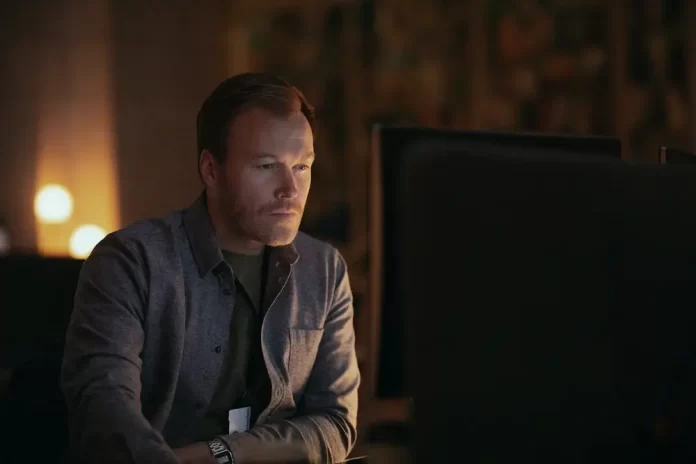Are Erlend Moe Riise and Aleks Zaretski Based on Real Reporters? Where Are They Now? – On September 14, 2022, Netflix will begin streaming The Lrenskog Disappearance (Forsvinningen p Lrenskog), a Norwegian crime drama series based on a true story. Gjyljeta Berisha and Erik Skjoldbjaerg are the series’ directors, and Gjyljeta Berisha and Stephen Uhlander are its creators. A total of 5 episodes total 52 minutes in length.
Some men in her own home kidnap a woman in her late 60s at the beginning of the series. It is a police-led redemonstration of what occurred on October 31st, 2018. One of Norway’s wealthiest people, businessman Tom Hagen, is married to Anne Elisabeth Hagen.
One day, the wife of Norwegian millionaire Tom Hagen, Anne-Elisabeth Hagen, vanishes from her house. The kidnappers demand millions of dollars in bitcoin in a ransom note that they leave behind. Even though Tom Hagen calls the police immediately, the inquiry drags on because the police strive to operate covertly to avoid giving the kidnappers any information that could endanger Anne-Elisabeth.
Some journalists can learn about it no matter how covertly they try to probe. Later, we watch the story develop from the perspectives of two reporters, each representing a distinct approach to reporting and offering the spectator a startling contrast. Does this imply that reporters Erlend Moe Riise and Aleks Zaretski are actual reporters, as the show is based on a true story? Let’s investigate.
Recommended: Anne-Elisabeth Hagen: Found or Missing? Is She Dead or Alive?

Are Aleks Zaretski and Erlend Moe Riise Based on Real Reporters?
The aftermath of Anne-Elisabeth Hagen’s disappearance is accurately depicted in “The Lrenskog Disappearance.” The case’s specifics and the investigation’s conclusions were taken right from the actual case. However, the show has used some artistic license to portray the journalists and their private lives. The storylines of reporters Erlend Moe Riise and Aleks Zaretski can be considered fabricated at the beginning of each episode.
The Daily News, which also employs Riise and Zaretski, is the newspaper in the Netflix series devotedly following the Hagen story. It appears that the Daily News is more interested in supporting the police’s assertions that Tom Hagen is the actual perpetrator of the crime against his wife, and Riise concurs with this. Similar to a real-world news network called Norwegian Broadcasting (NRK), Daily News appears to have a sizable viewership. When Tom Hagen, Anne-Elisabeth’s husband, is released from custody after serving 11-day detention following his unannounced arrest by the police on suspicion of his wife’s abduction, NRK makes an appearance at the end of the program. This suggests that the Daily News’s headquarters are not in NRK.
Aftenposten is a different actual newspaper that has followed the entire narrative. Although the show doesn’t mention it, the Daily News is comparable to Aftenposten (or “The Evening Post” in English) in real life. One of Norway’s leading newspapers, Aftenposten, has covered the real-life Hagen case from the outset, much like the Daily News in the television series. A group of journalists from Aftenposten covered the case, gathering information from numerous sources and adding to the story in their own trust-worthy style, just like the close-knit Daily News team did.
At the police’s request, Aftenposten remained silent regarding the Hagen case, releasing their conclusions only after the police made them known. Espen Egil Hansen, the editor-in-chief, stated that they “chose to respect” the police’s choice to keep the investigation under wraps to protect Anne-Elisabeth Hagen’s life. He claimed that withholding information about the case at the outset may have been a mistake and severely hampered the inquiry.
“We must rely on the police, who we can be sure had valid justifications for keeping quiet. The legal authorities will be under immense pressure to at least be transparent about the reasons for their request that we keep quiet when the time comes. There’s no guarantee it was accurate, according to Hansen. He added that it was the media’s responsibility to examine the police’s handling of the case critically. Although such spotlights are uncomfortable for police, he continued, “that is the press’ job, and it is a vital role.”
In “The Lrenskog Disappearance,” Erlend Moe Riise and Aleks Zaretski of the Daily News wind up on opposite sides of how they want the reporting to be done. This fictional element of the show was included to provide several viewpoints on the narrative and emphasize its core issue, which is the prejudice, bias, and preconceived beliefs that frequently shape our opinions regarding high-profile criminal cases like this. Zaretski wants to investigate Hagen’s guilt with a much more open mind than Riise, who has already made up his mind about it. In the real world, we haven’t encountered anything like this conflict in Aftenposten.
Zaretski’s character might have taken some cues from Nina Selbo Torset, an investigative journalist and data journalist for Aftenposten. Torset joined Aftenposten in 2013 after earning his criminology degree from the University of Oslo. She is the Chairwoman of SKUP-Stiftelsen för en Kritisk og Underskende Presse and a Network Member of The International Consortium of Investigative Journalists. She has looked into incidents of “organized crime, misuse of public funding, cancer research, and sexual abuse of minors.”
Additionally, Torset oversaw the investigation into the ICIJ projects, Panama Papers, and Bahamas Leaks. Torset’s dedication to her initiatives and Zaretski’s determination to uncover the truth about the Hagen case at all costs are comparable. On the other hand, Erlend Moe Riise looks to be a composite of the Aftenposten team’s more seasoned and renowned investigative journalists. Jan Gunnar Furuly, who has worked with Aftenposten since 1990 and is now the chairman of the Norwegian Foundation for Investigative Journalism, covered the Hagen case.
Then there are Andreas Bakke Foss and Fredrik Hager-Thoresen, who have both worked for Aftenposten for many years and whose articles, “Secret Surveillance in Moscow,” were both chosen for the 2015 European Press Prize shortlist. The Netflix show centres on Riise’s persistent research, which eventually develops into an obsession and destroys his personal life. This fictional character arc was created to illustrate the impact of unresolved true crime cases on those who get so consumed with cracking the case that they lose sight of other more pressing matters.
As far as we know, this is not comparable to an actual Aftenposten investigator. Given all that is said above, it is reasonable to believe that the authors of “The Lrenskog Disappearance” were only very loosely influenced by the reporters who covered the case. But when it comes to the character arcs on the show, we assume that the writers made up such stories out of thin air to convey their point successfully.
The Lørenskog Disappearance is currently streaming on Netflix.














